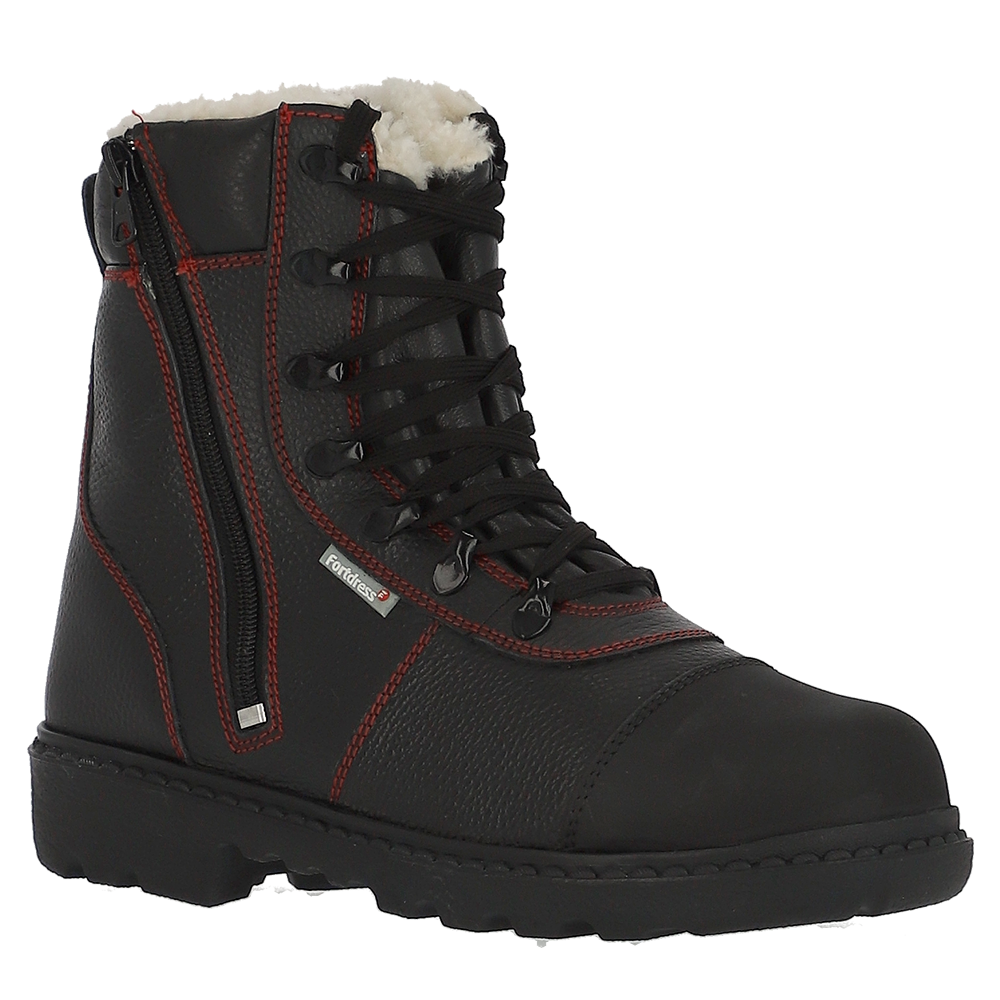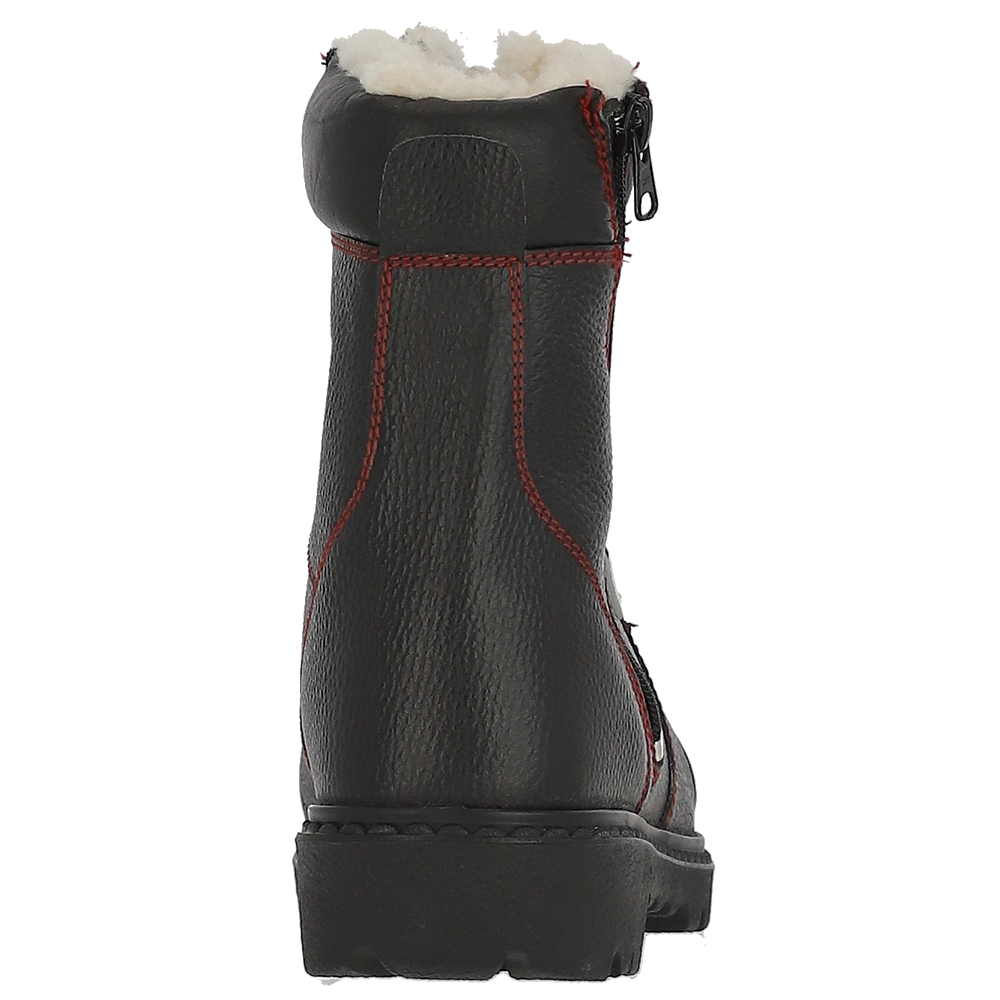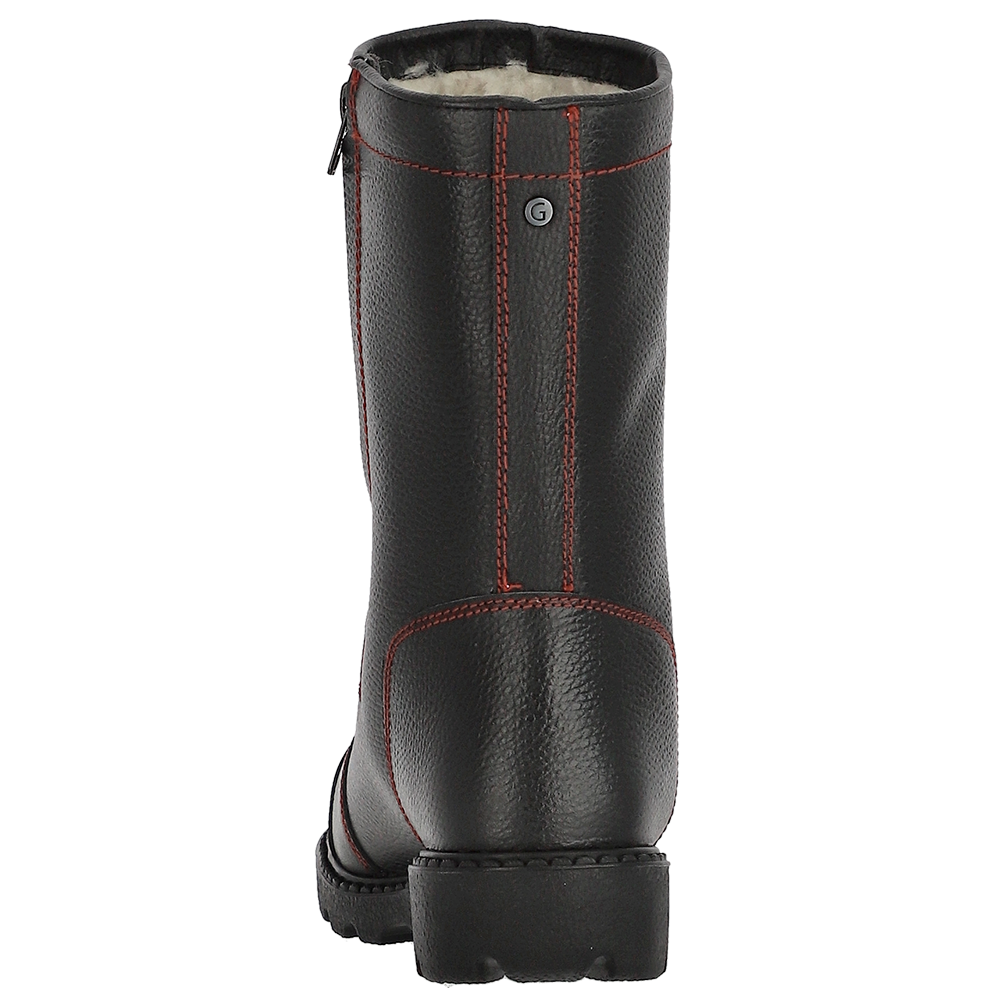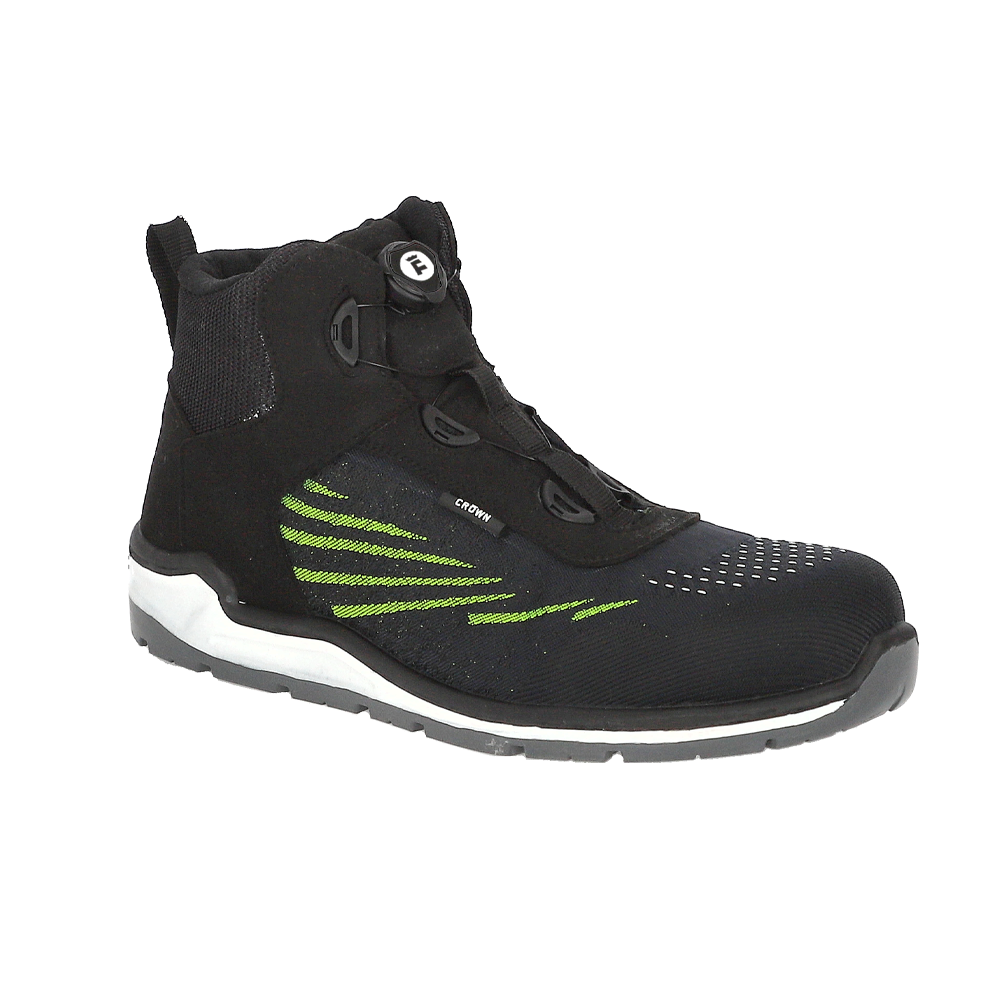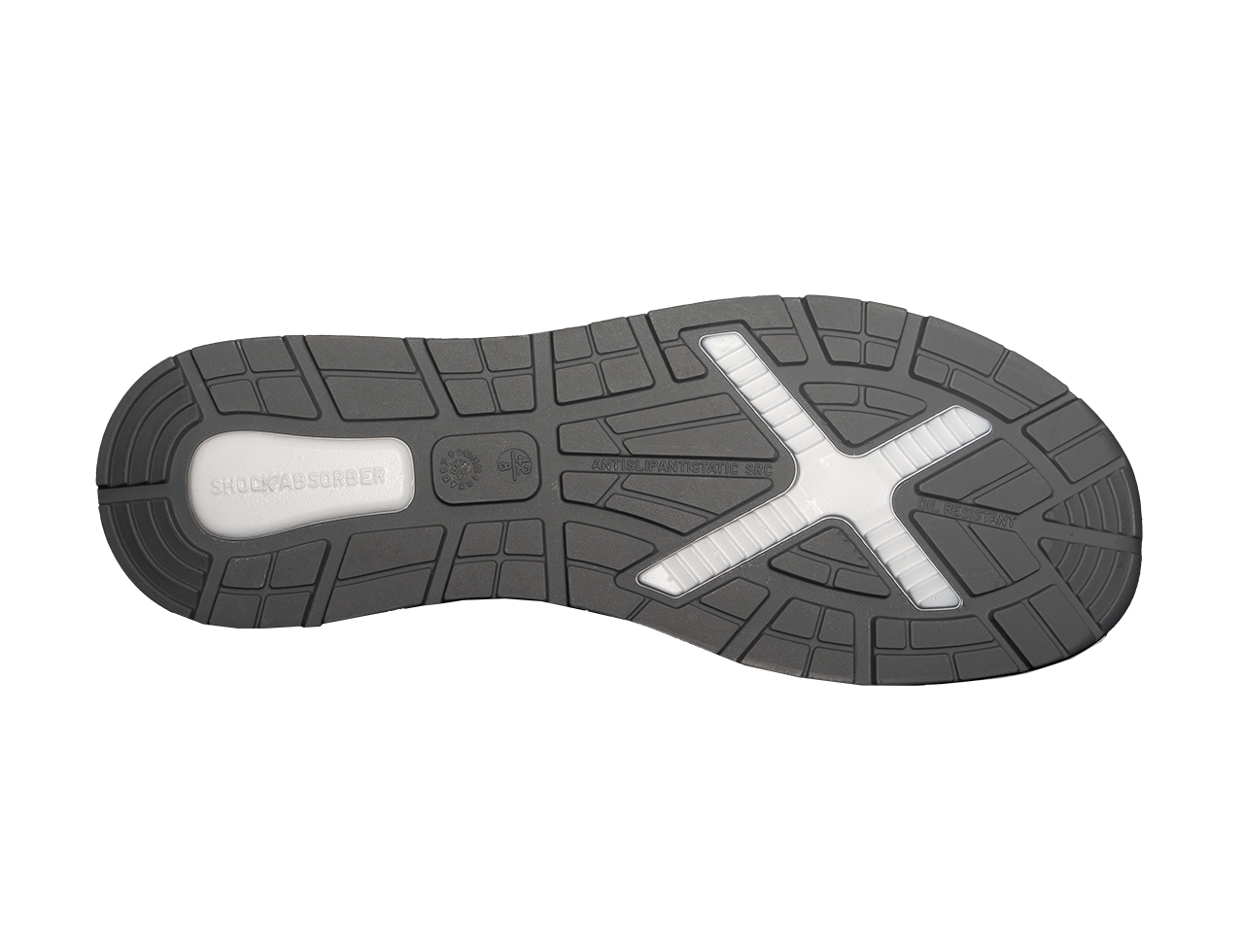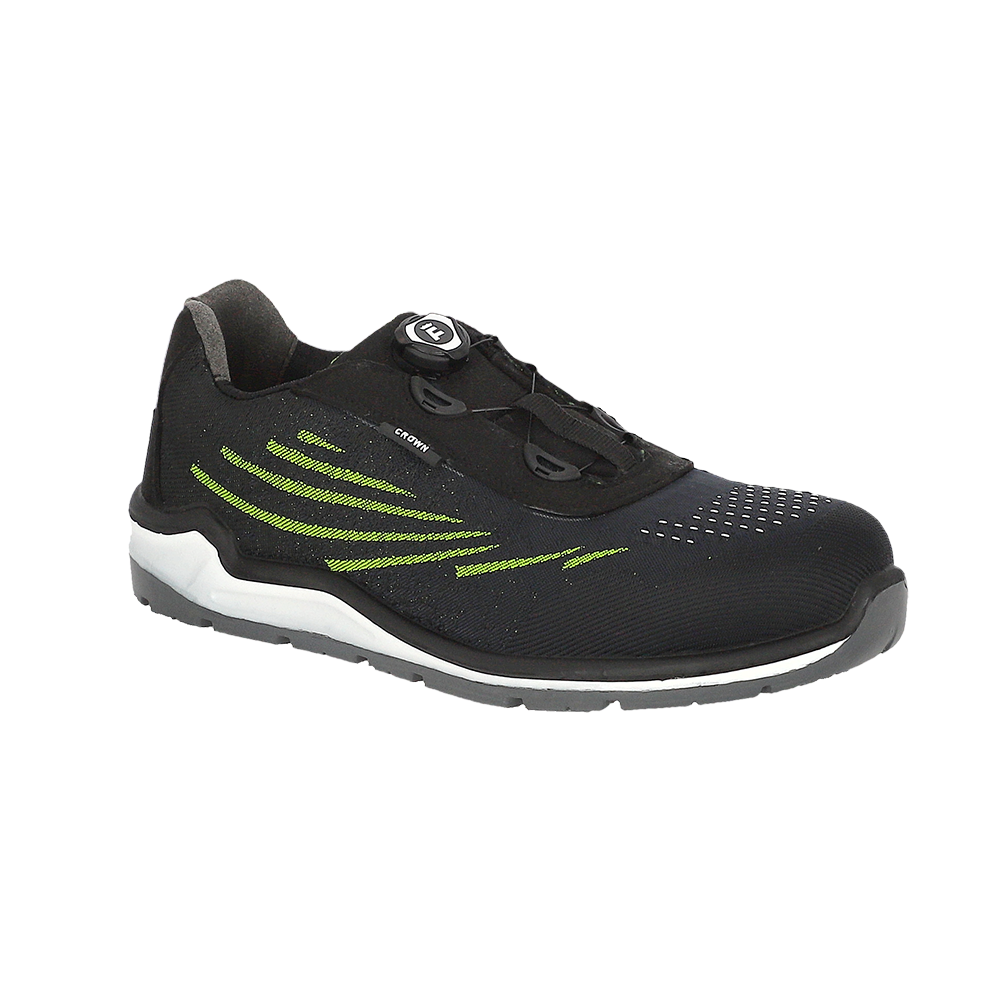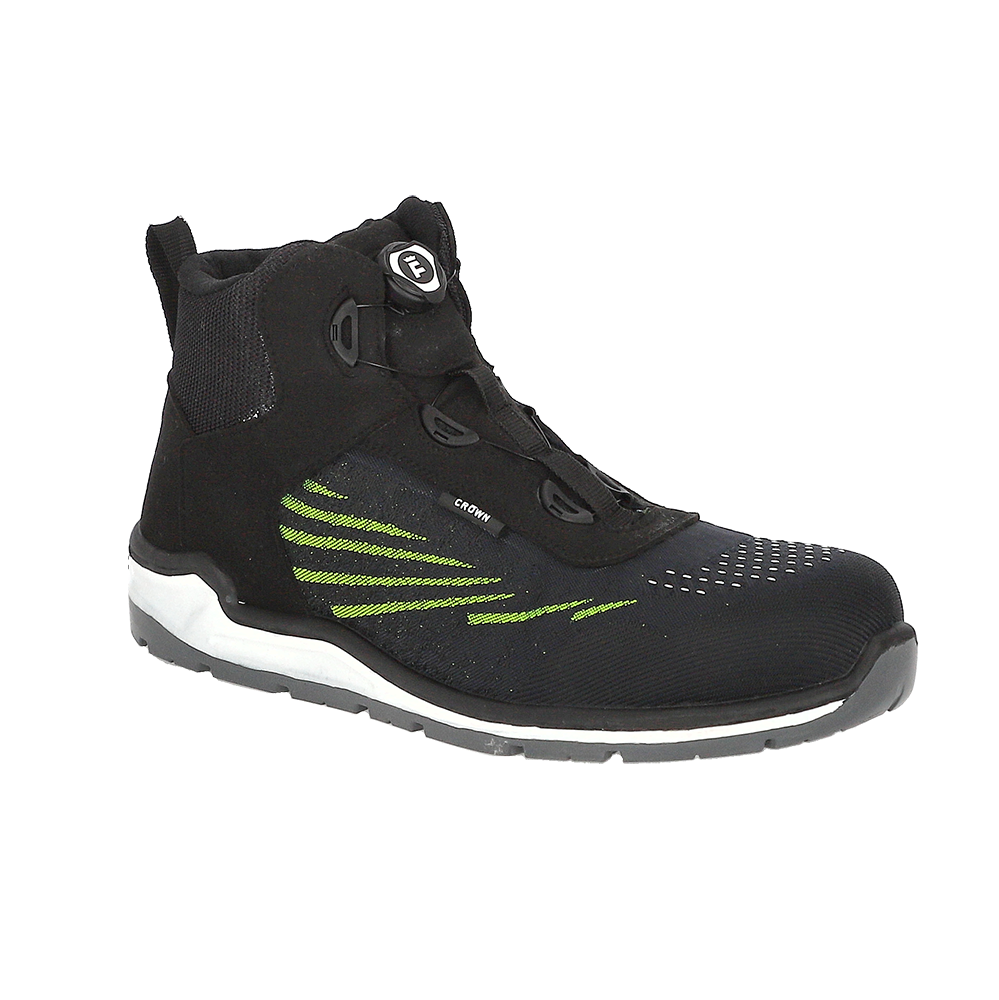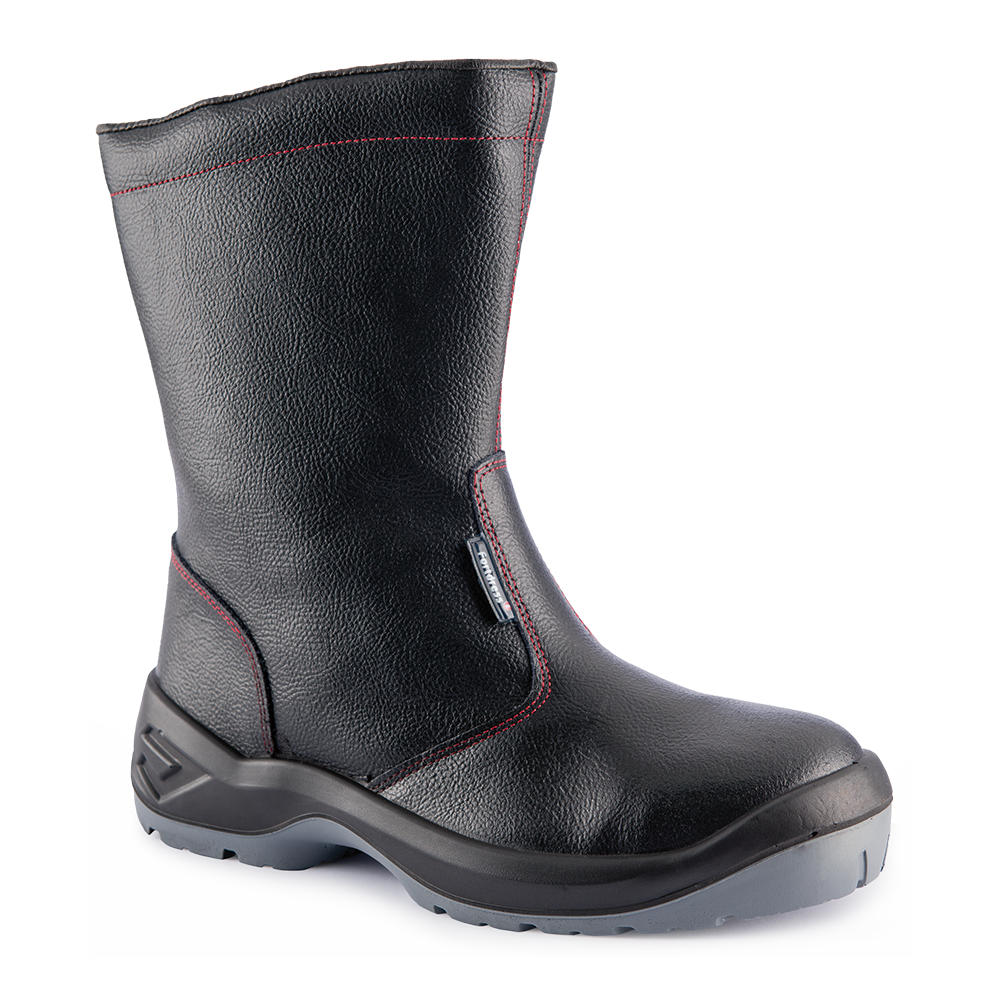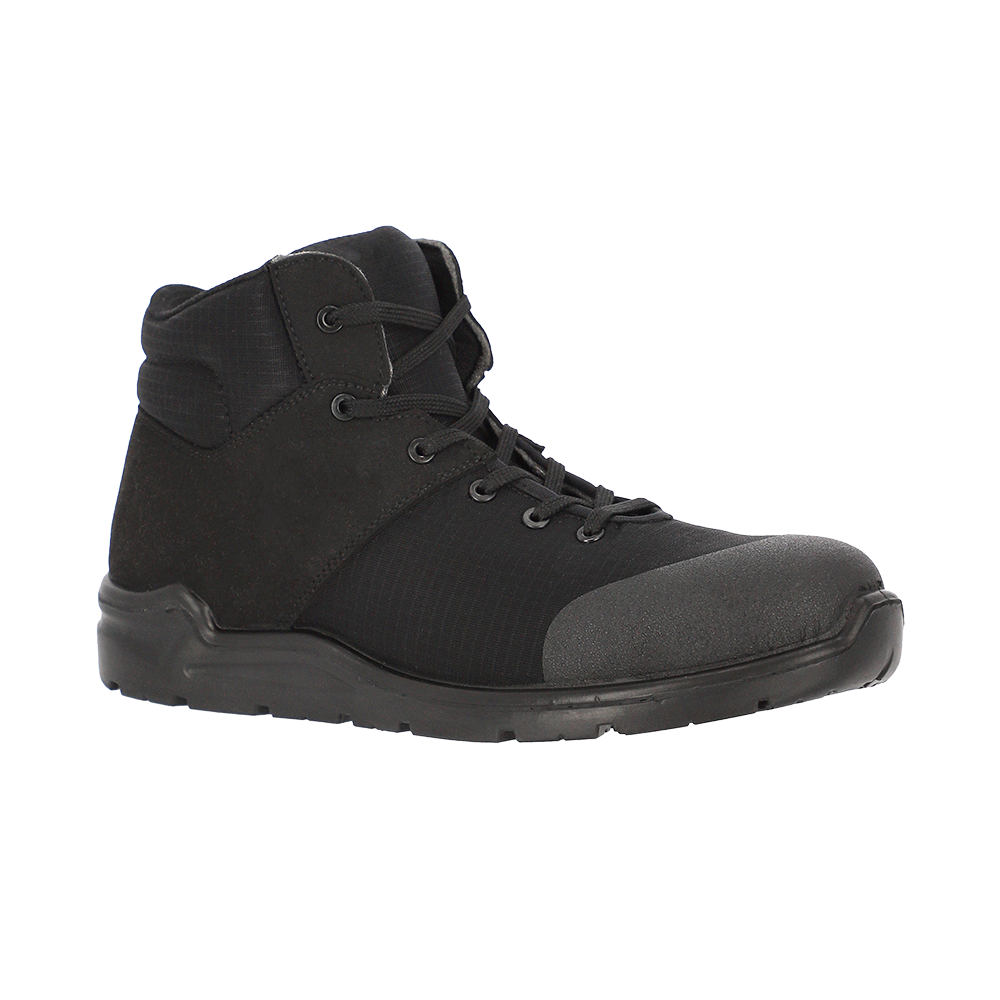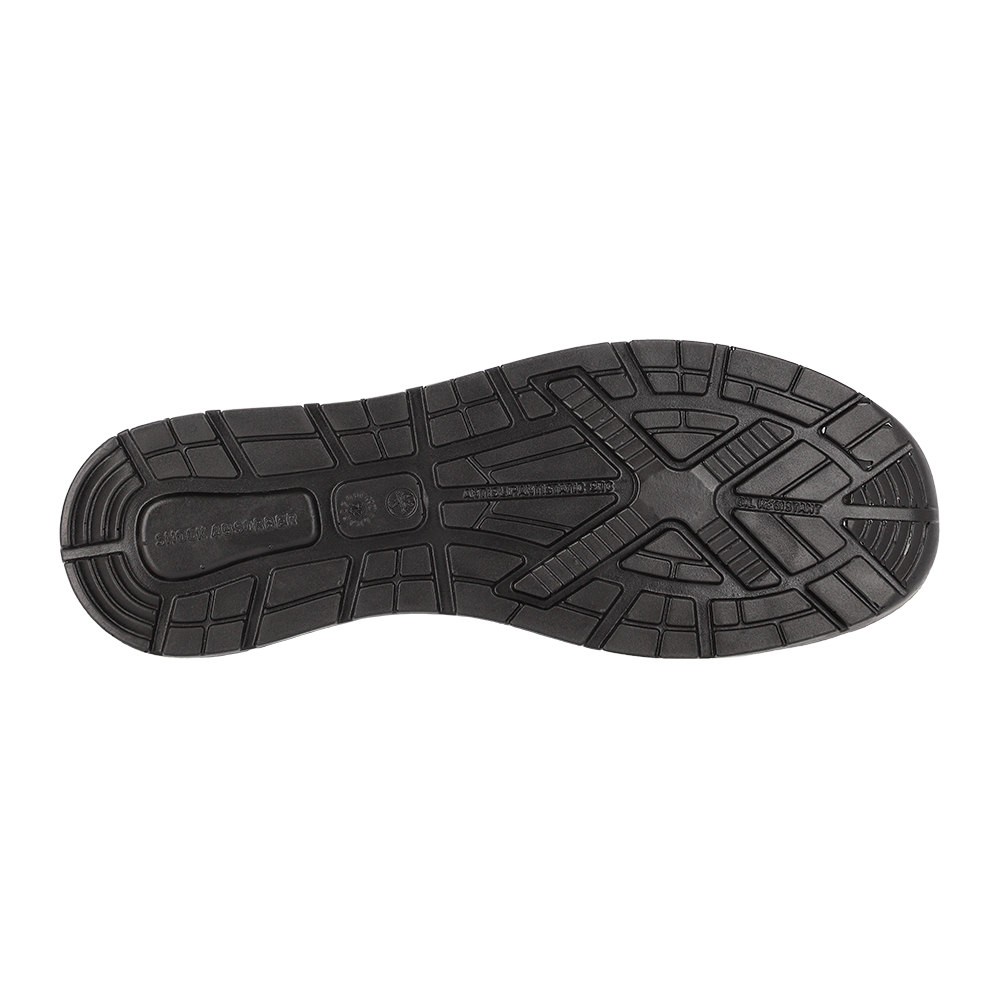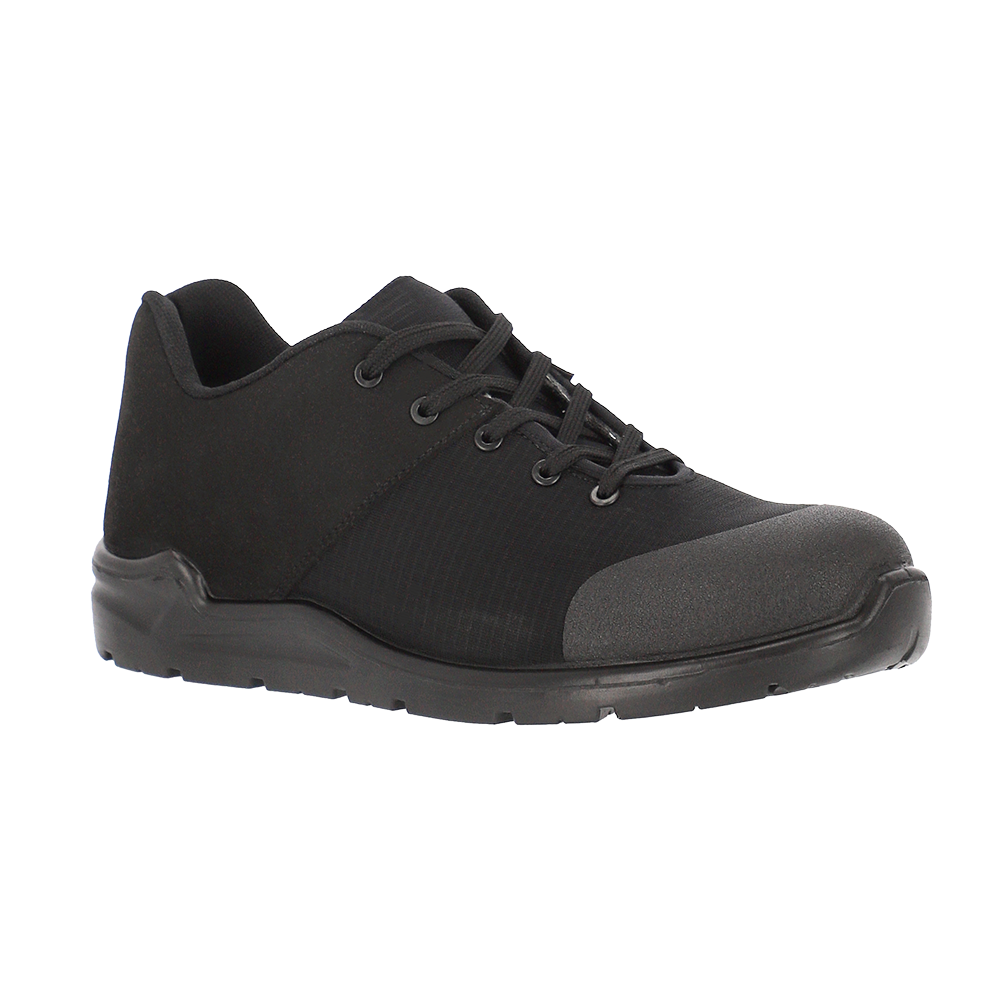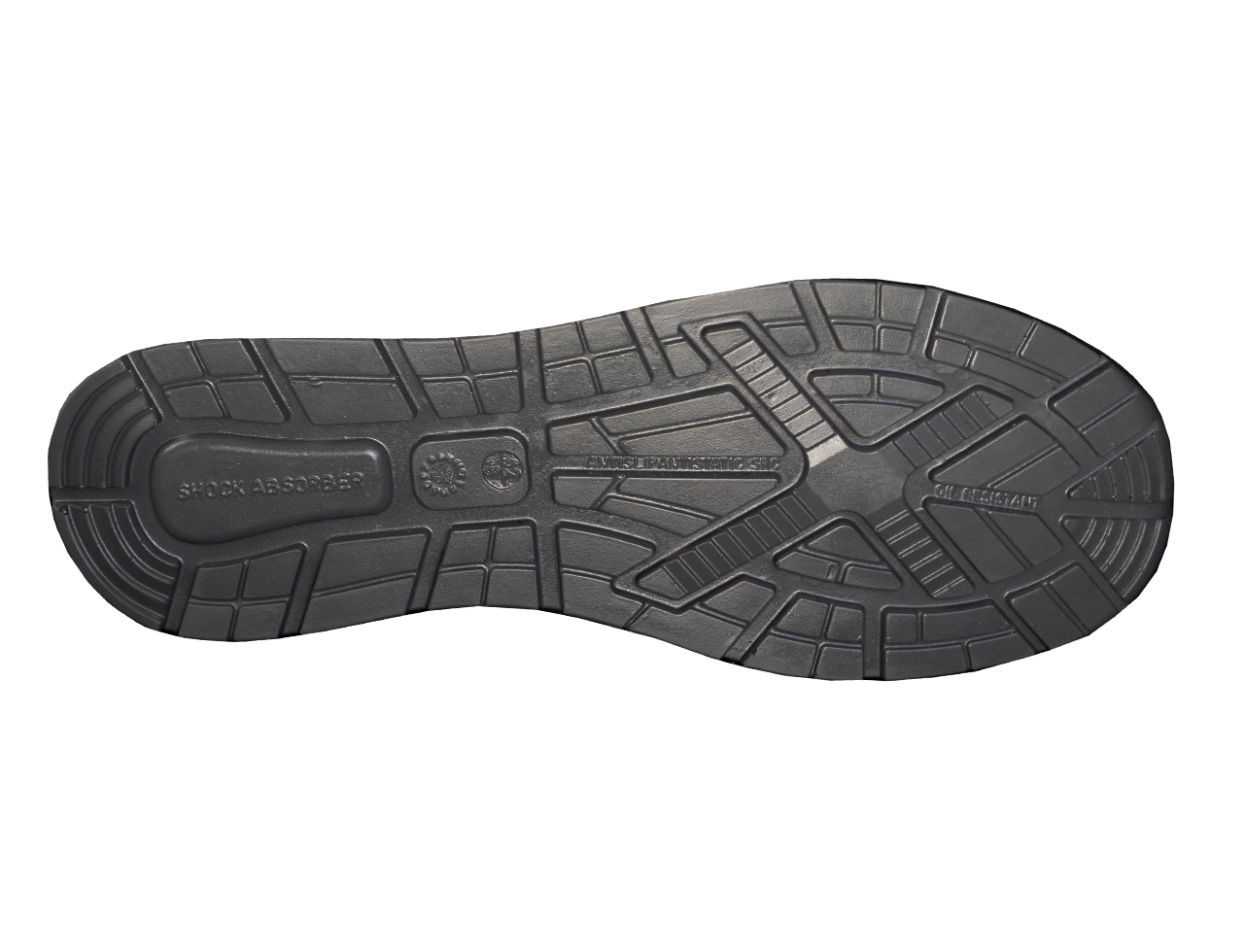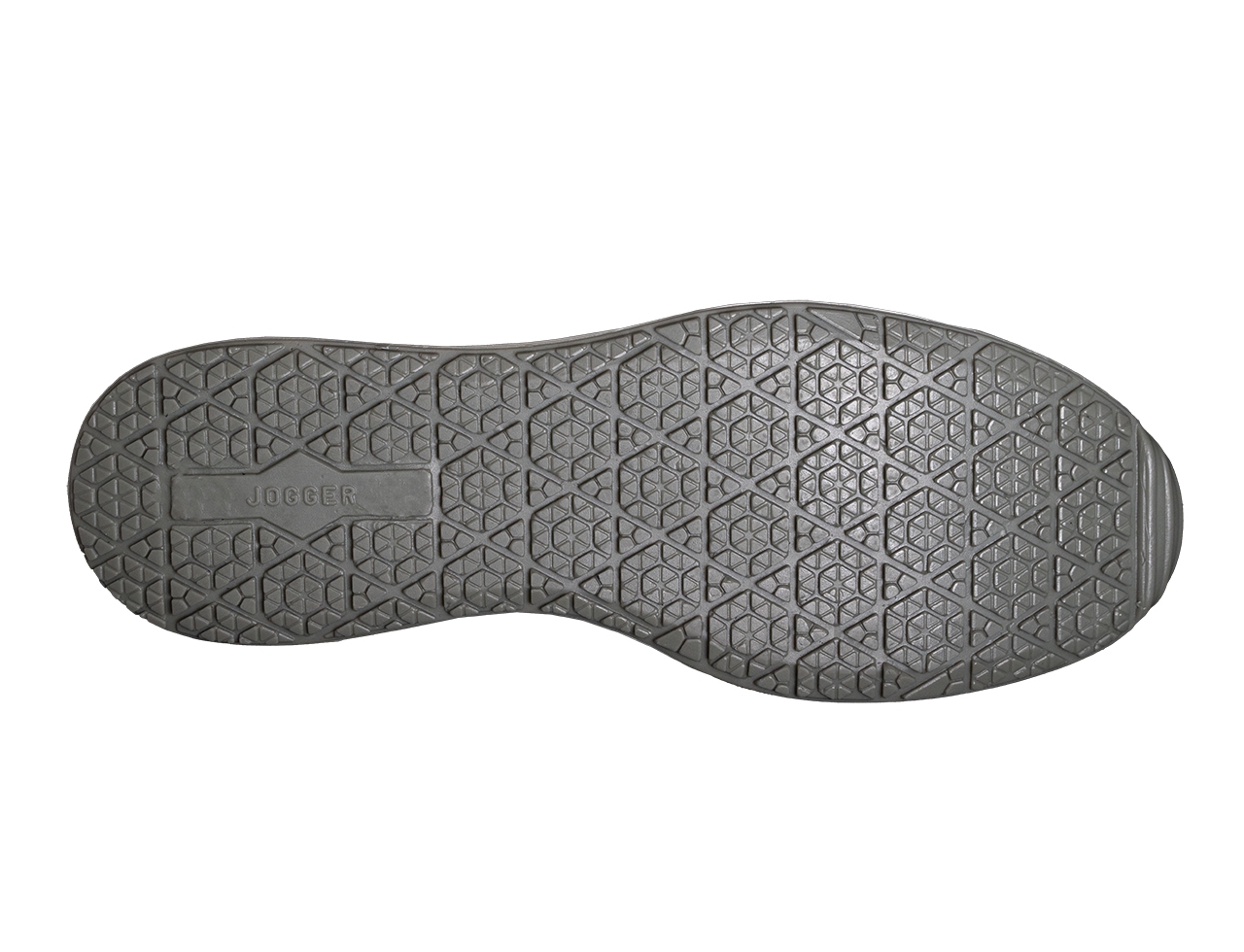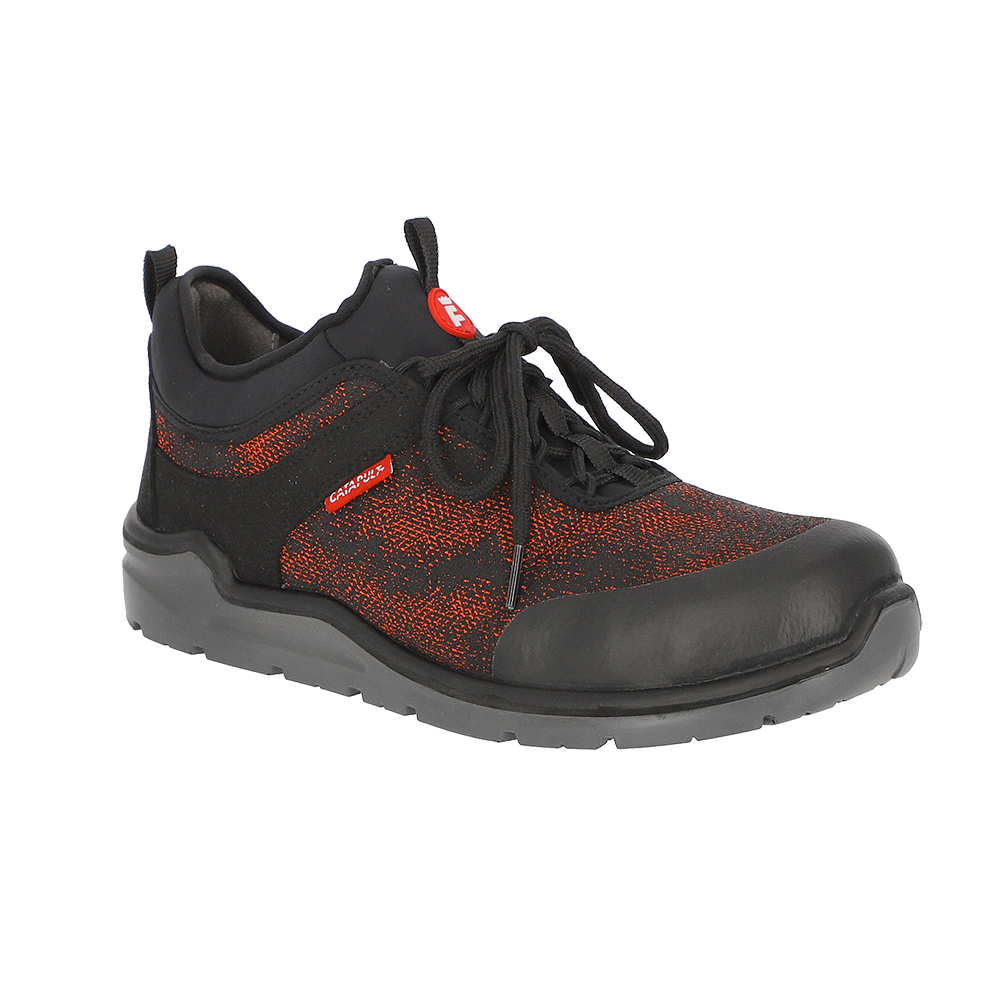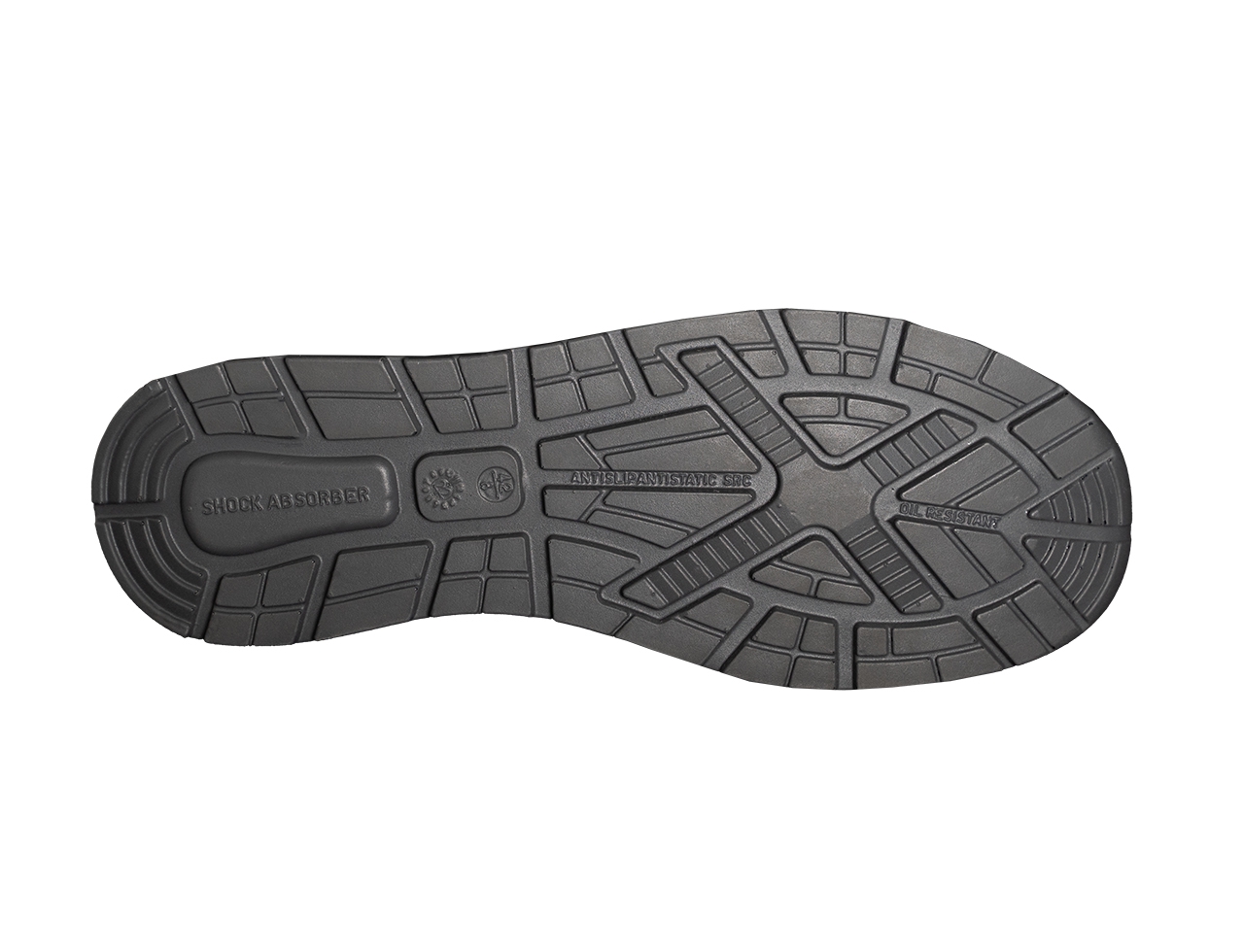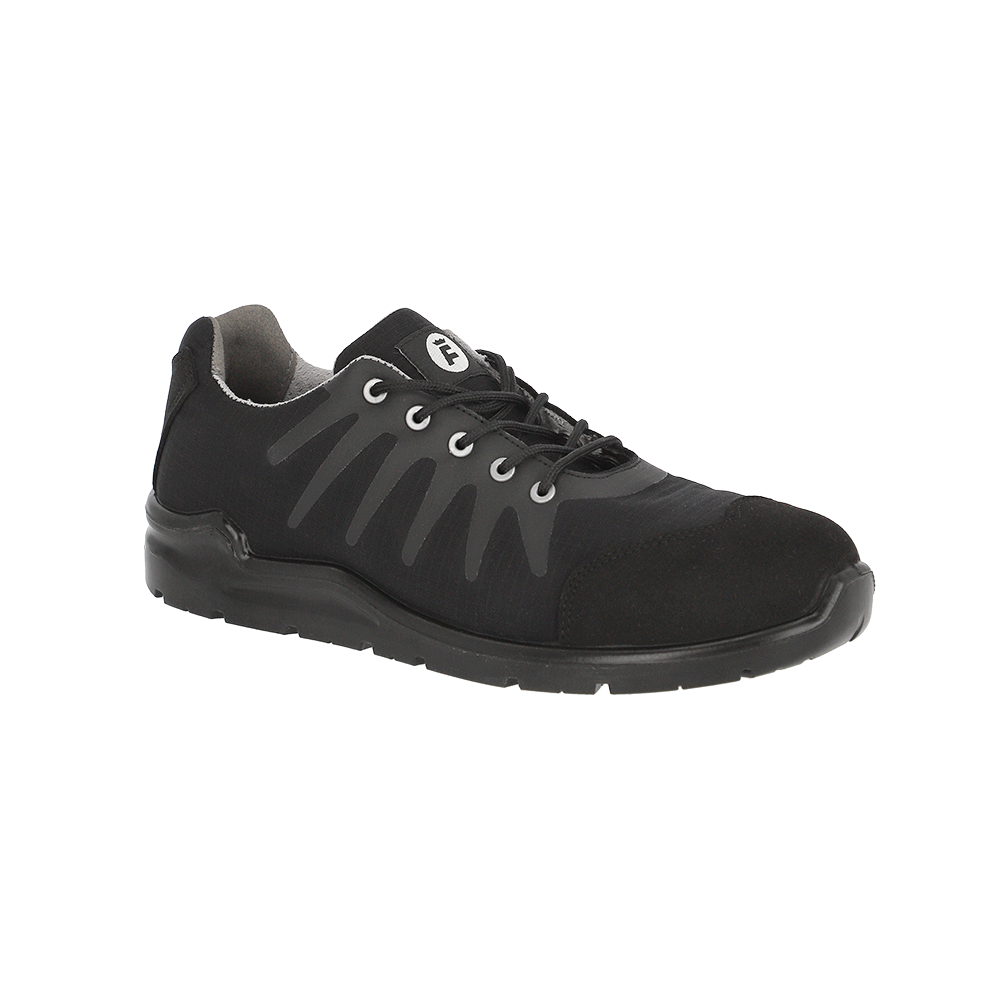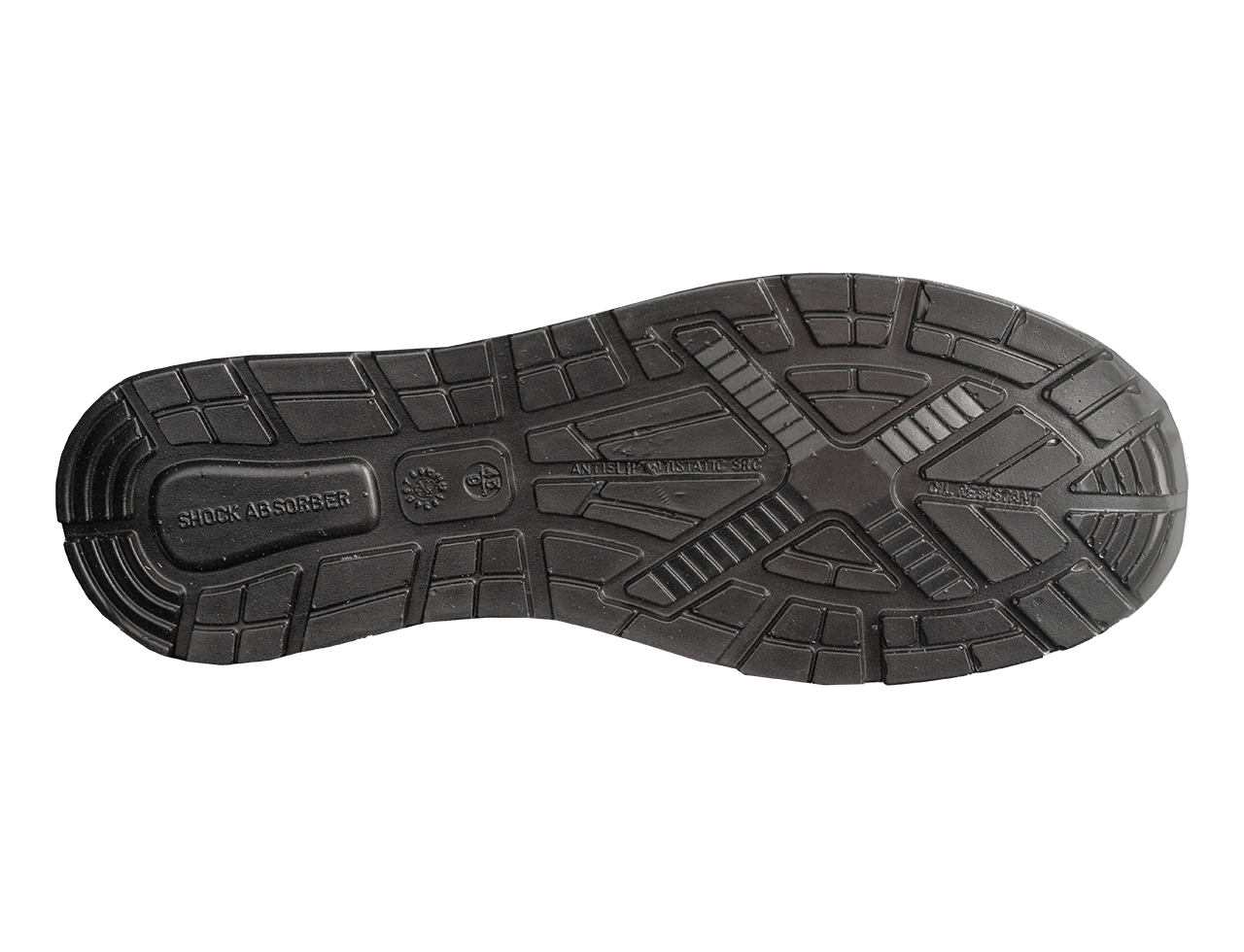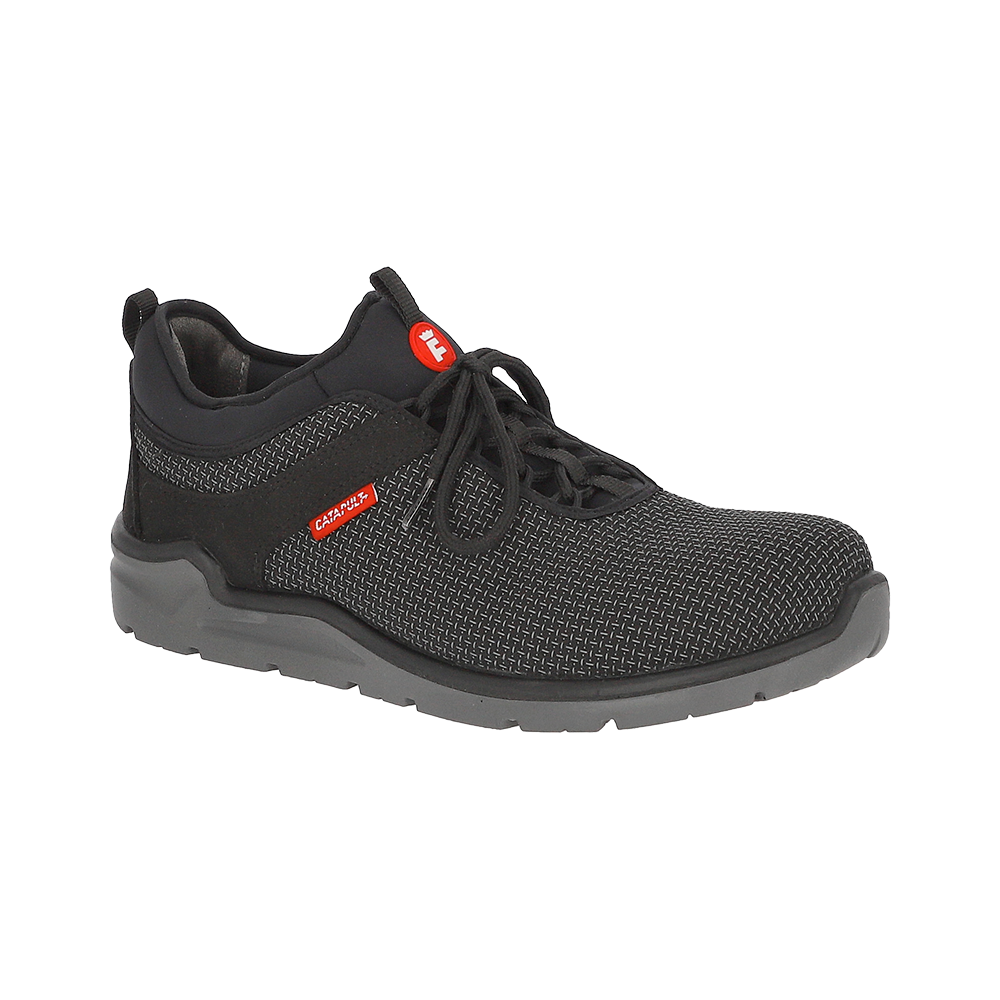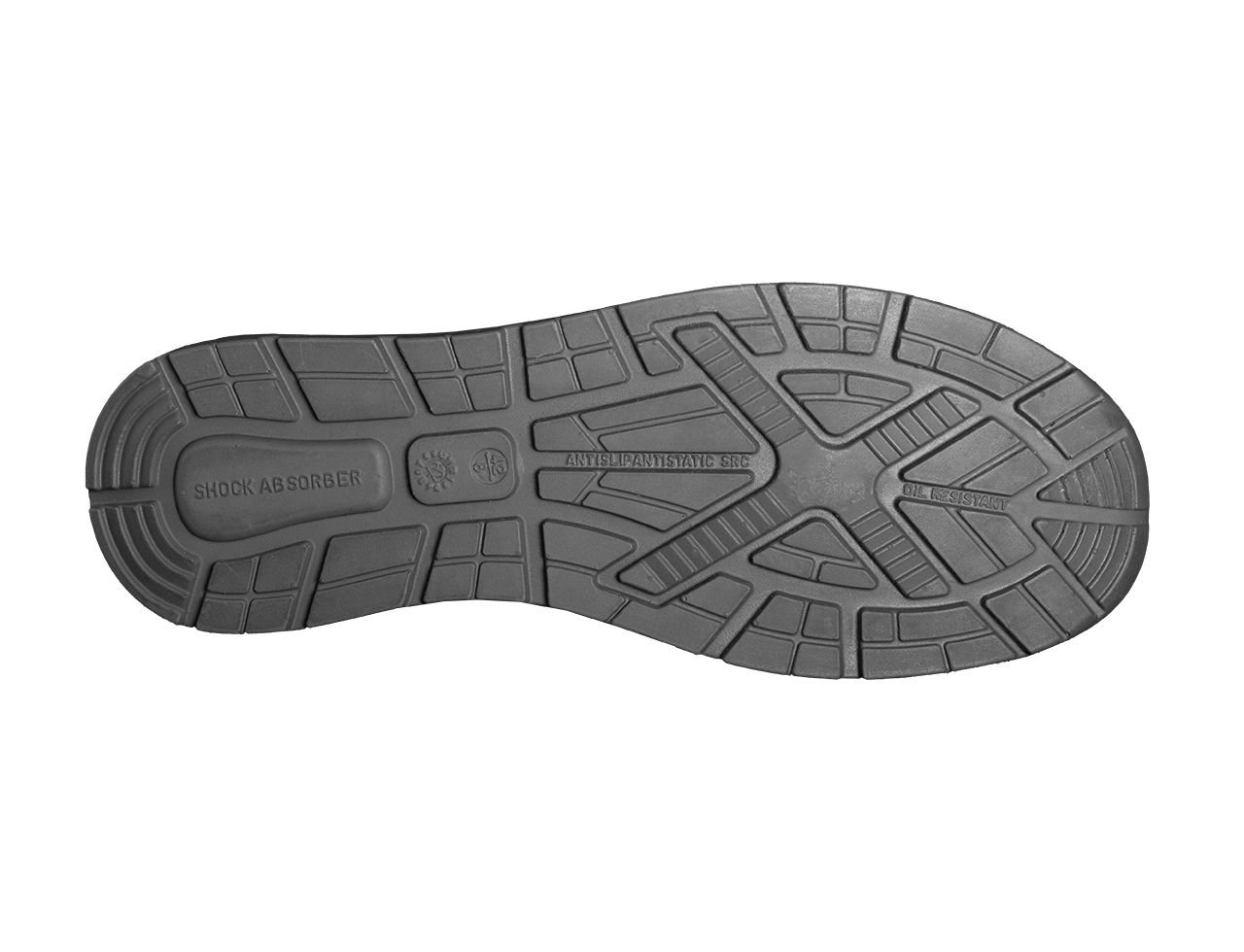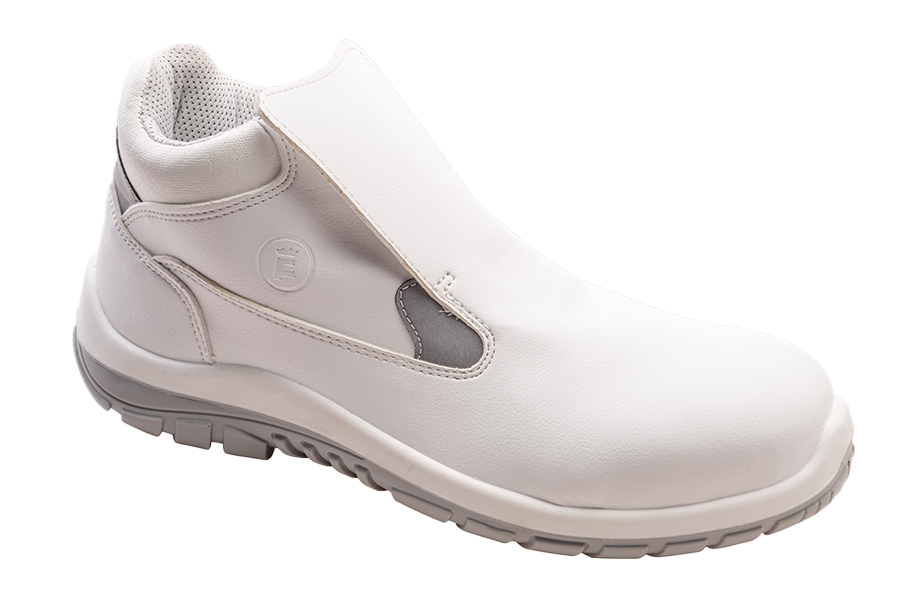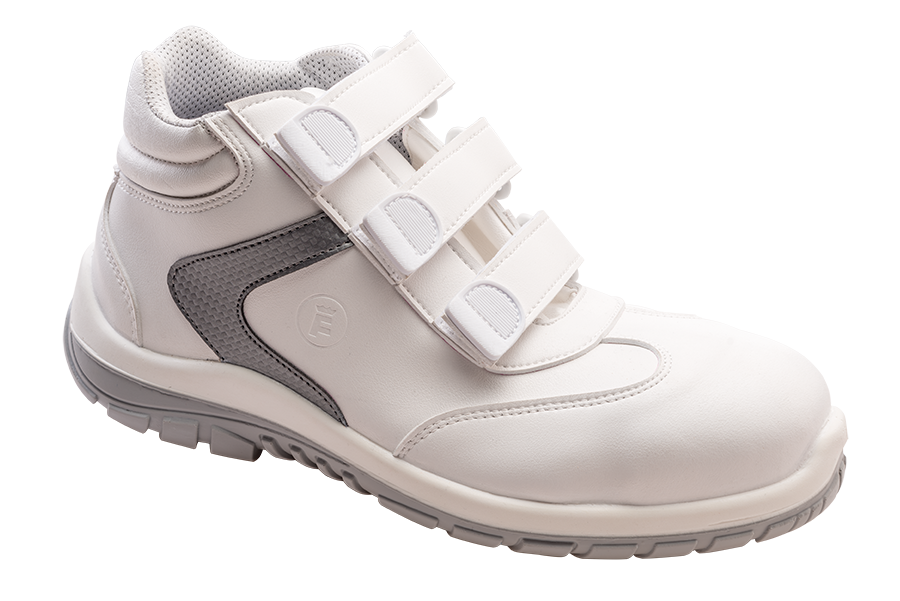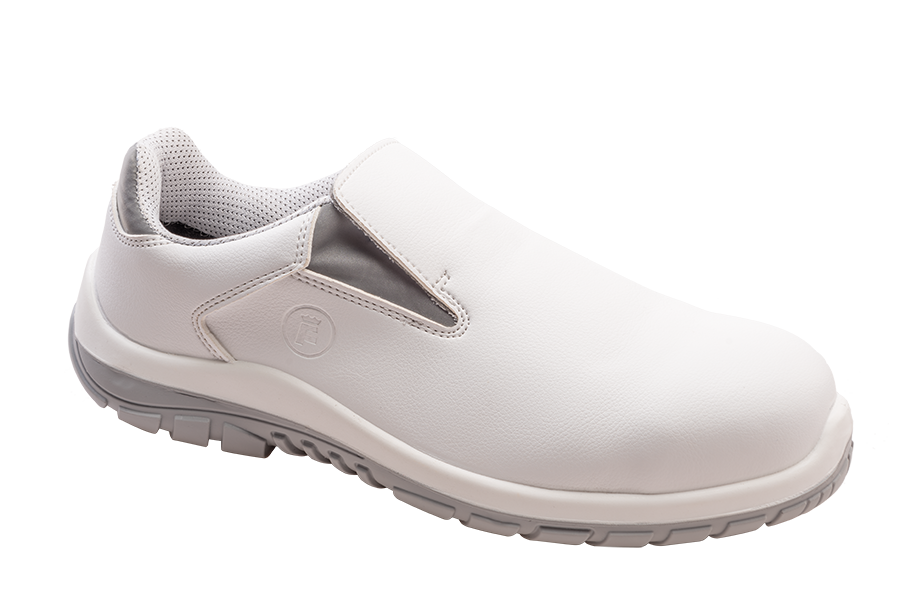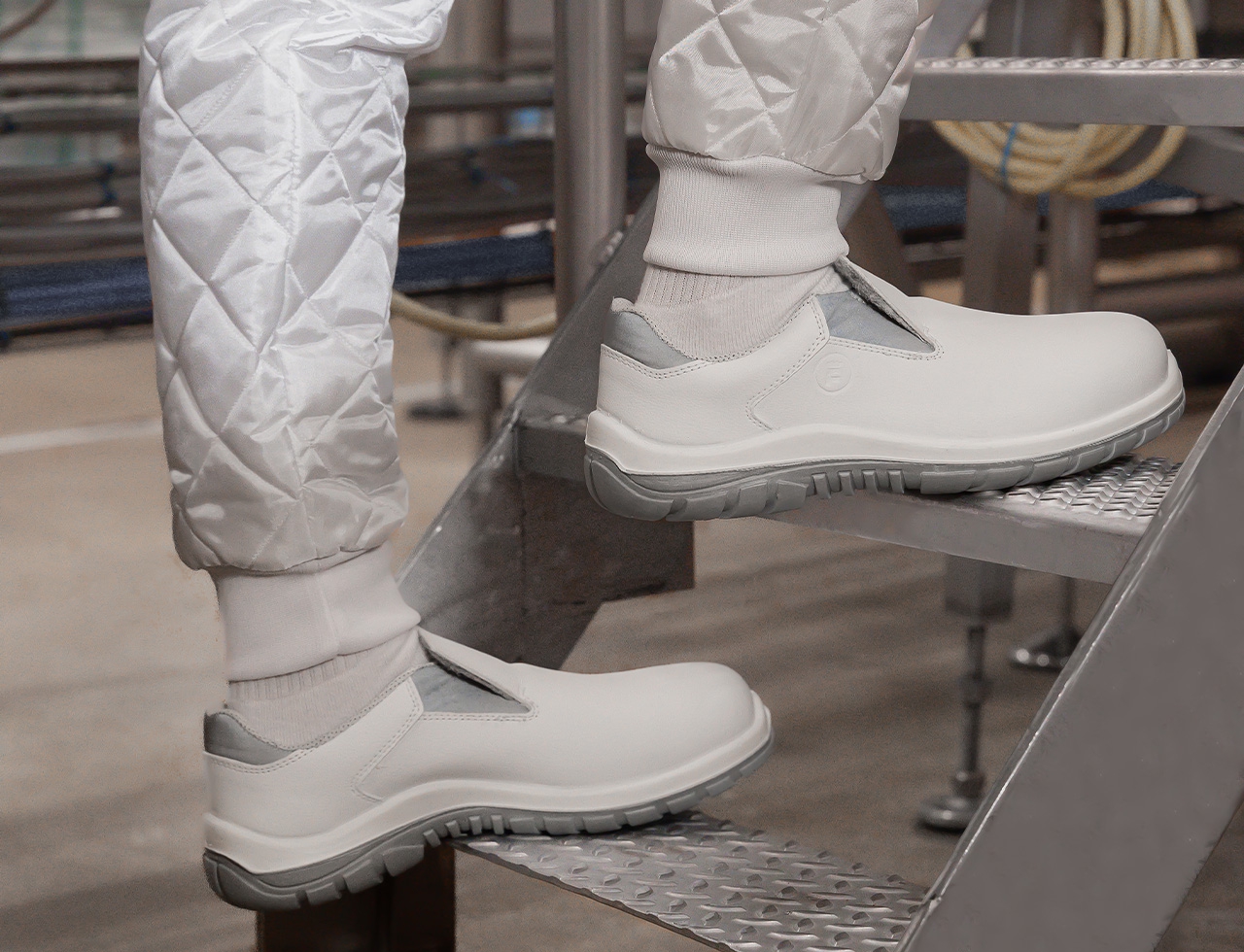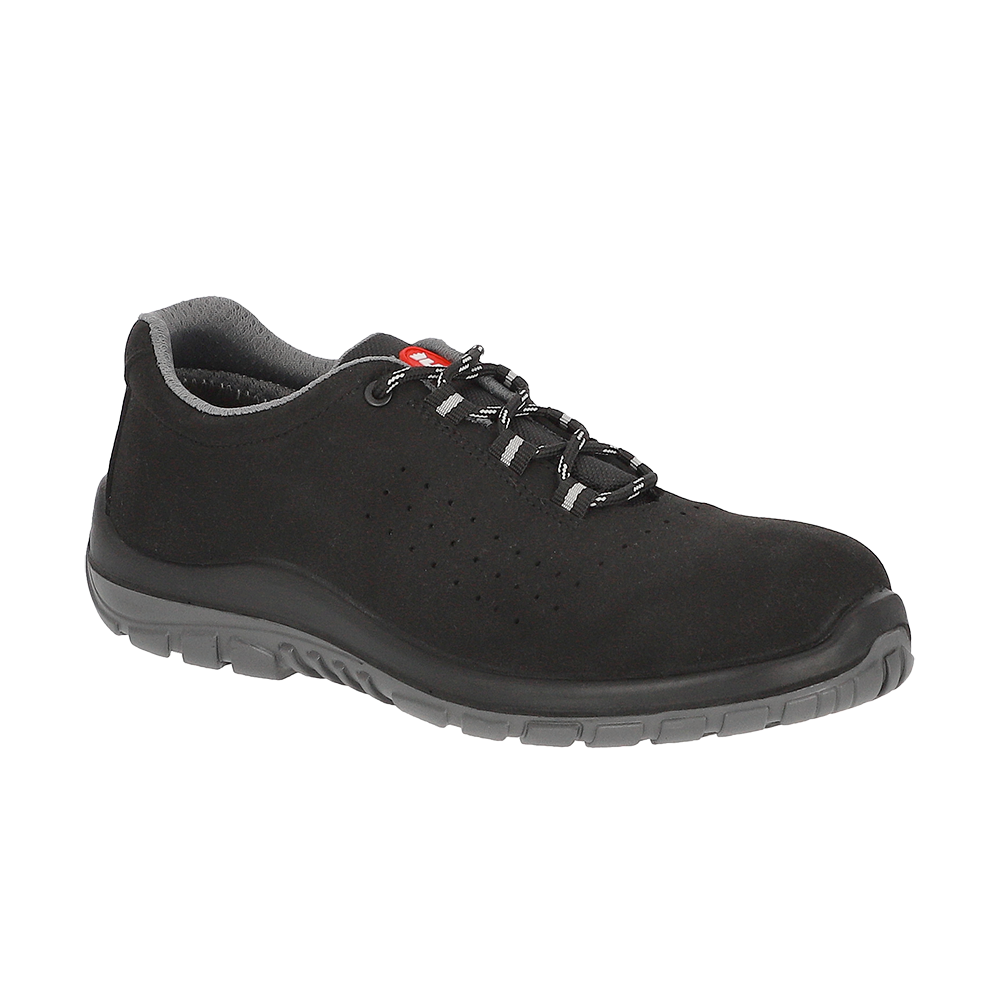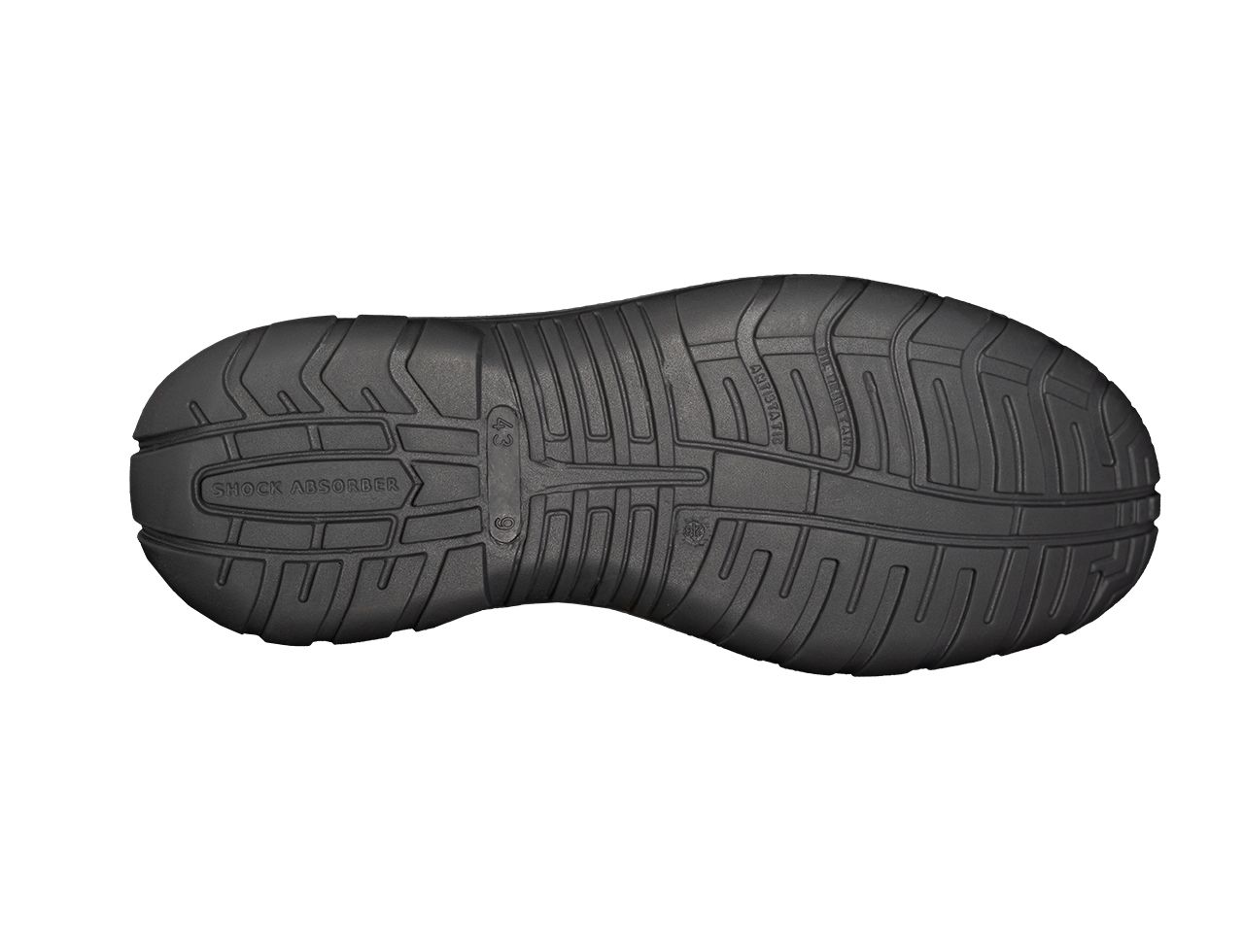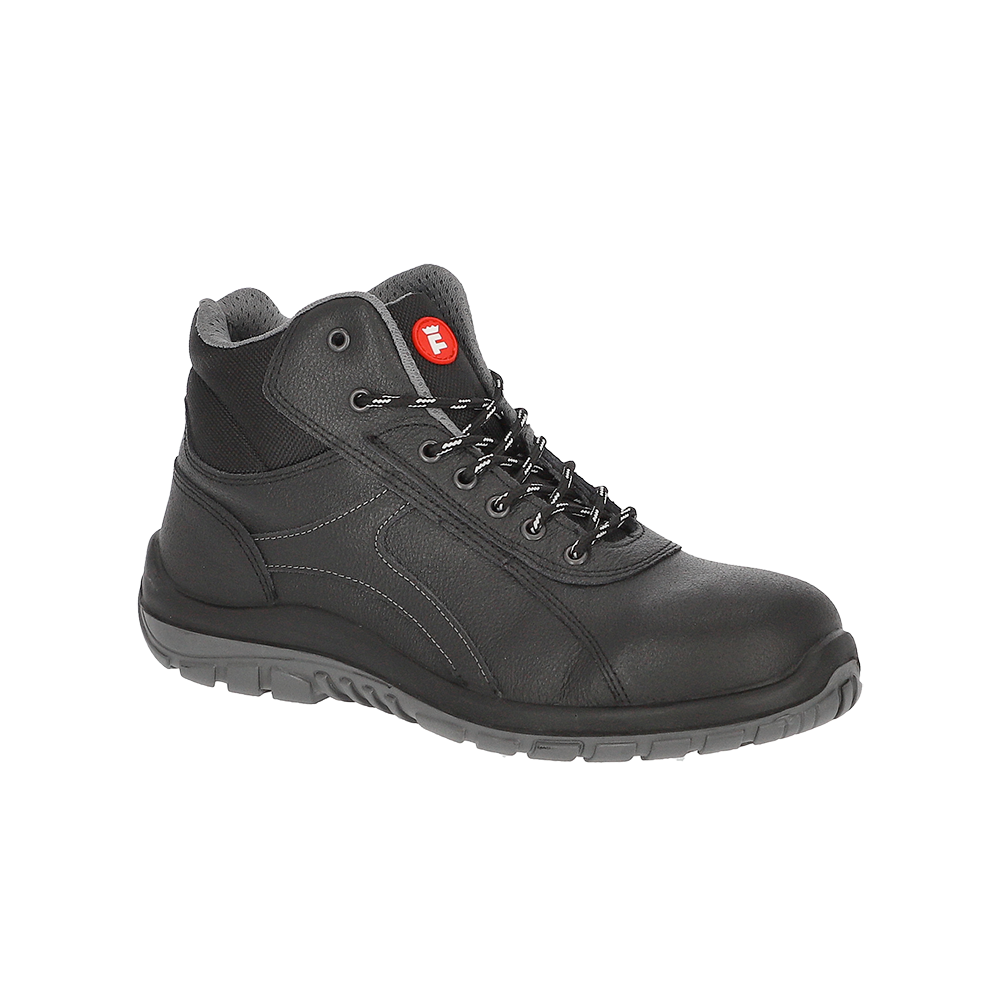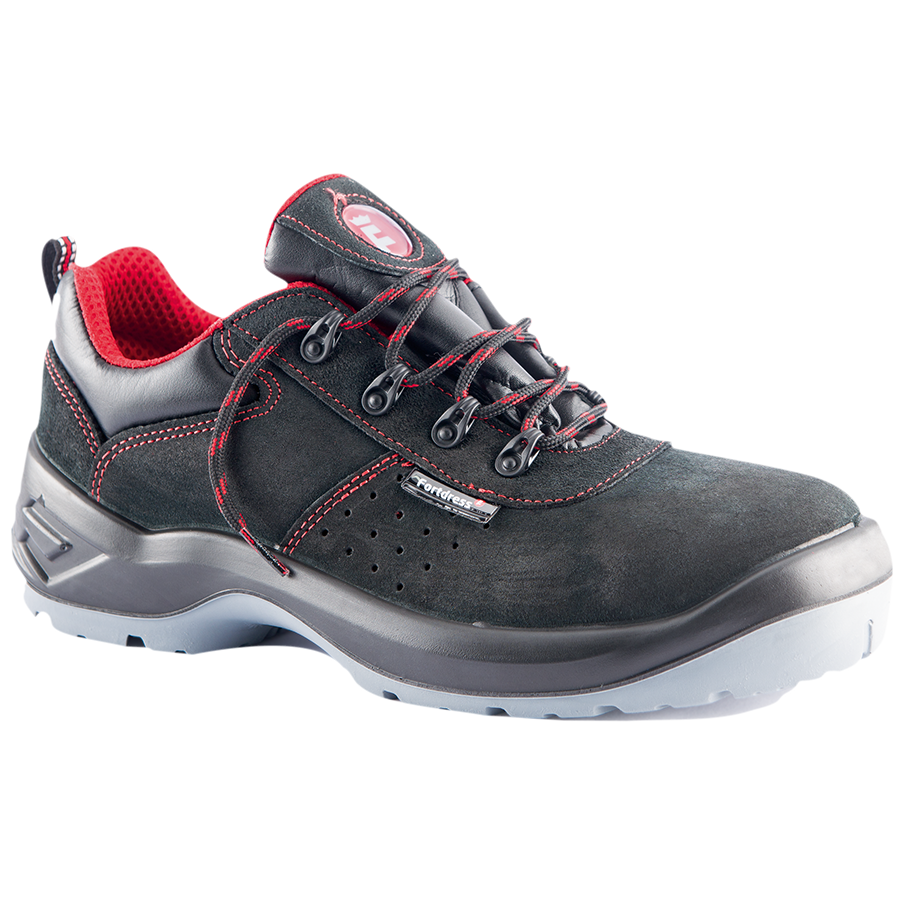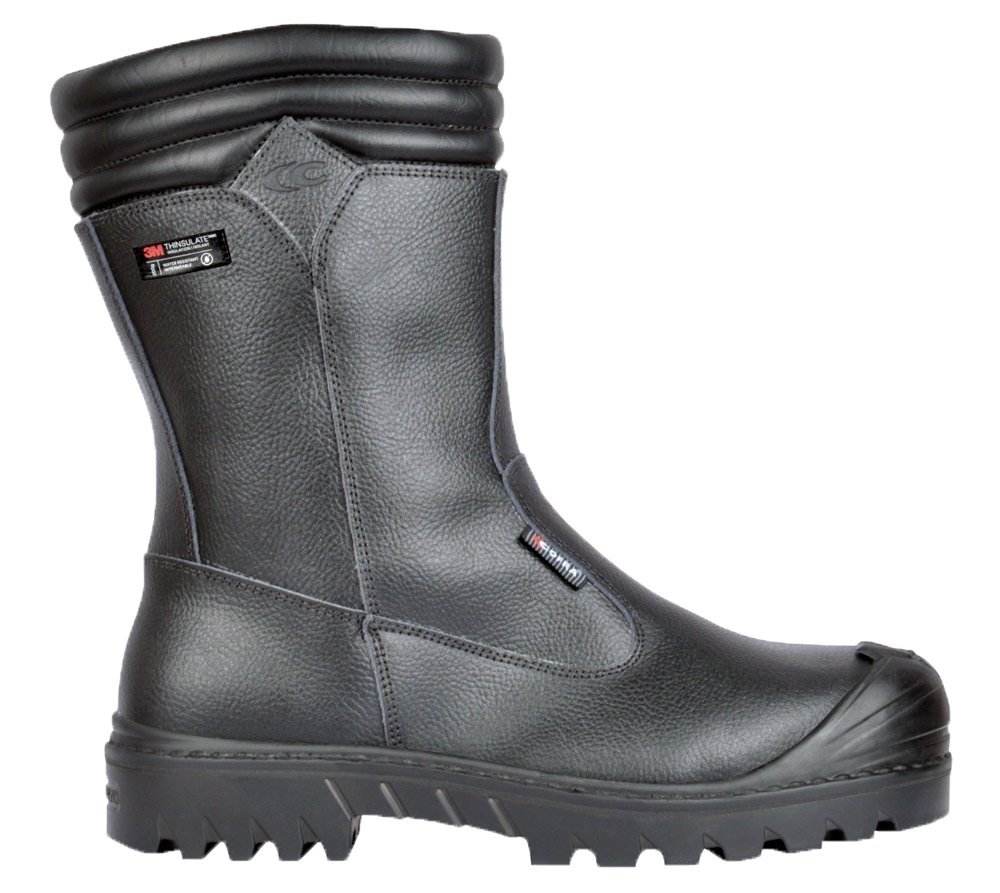



















EN ISO 20345 - European Standard for Safety Footwear
Safety shoes are an indispensable part of personal protective equipment in many work areas. They protect your feet from injuries caused by falling objects, sharp edges or glowing surfaces. As experts in occupational safety, we offer you comprehensive advice and a wide range of EN ISO 20345-certified safety shoes.
Our high-quality products combine safety, comfort and durability to provide you with the best possible protection. Read on to find out more about the European Standard EN ISO 20345 and our premium safety footwear.
Optimum protection - from toe to heel.
Different work areas require appropriate work clothing. The same applies to the right protective work shoes. Our safety and work shoes in protection classes S1, S1 P, S2, S3 as well as S5 protect perfectly in industrial areas or logistics environments. In addition to safety shoes, our range also includes work shoes. If you give your best every day in your working life, you need safety shoes that support you in your tasks. Safety shoes that protect, are comfortable and fit perfectly. Choose the right shoe for your work area!
Which shoe do I need?
At the latest in professions where foot protection in the form of safety shoes becomes relevant, the question arises for employees or safety officers: What protection class must the safety shoes have? It often turns out that the differences between the most common protection classes are not clear enough. To shed light on this, the structure of the protection classes is presented below.
Safety classes
Safety shoes are classified in two classes.
- Class I (SB, S1, S2, S3): Footwear made of leather or other materials, with the exception of solid rubber or total polymer footwear.
- Class II (SB, S4, S5): Solid rubber shoes (i.e., whole vulcanized shoes) or whole polymer shoes (i.e., whole molded shoes).
If you have foot protection that meets only the basic requirements, you have an SB safety shoe. Only in this SB safety category can the heel area be open. If the safety shoe meets other additional requirements, it is classified in different safety classes. S1, S2, S3, S4 & S5.
Here is a complete overview of the minimum requirements of EN ISO 20345 for each safety class.
Safety shoes SB
Shoes with this class are basically normal shoes, which are provided with a protective cap, which is certified according to DIN EN 12568. Thus, shoes of this class are the simplest models. However, due to the low level of protection, the field of application of these shoes is relatively limited.
Safety shoes S1
S1 work shoes also have an antistatic sole. It ensures that electricity can leave the body and thus prevents small electric shocks. The sole must be resistant to oil and gasoline. The heel must be closed, which provides a stable all-round protection. This includes sandals that are closed at the back. Clogs, however, do not belong to this category, because they only correspond to the "SB" category, the basic equipment.
Safety shoes in this protection class are mainly used in wholesale, canteen kitchens, bakeries or by truck drivers who need lightweight shoes and occasionally perform loading activities.
The other protection classes are based on protection class S1. These are extended by a wide range of properties, which are explained in more detail below.
Safety shoes S1P
This protection class has the same properties as protection class S1. The suffix "P" stands for "penetration proof". Thus, shoes of this protection class are supplemented by a penetration protection. An additional midsole made of stainless steel or synthetic fibers is incorporated. This addition is important when there is a threat of danger from below. Pointed objects lying around, such as nails and similar objects, which can threaten the health of the foot from below.
Areas of application are, for example, in joiner's workshops and trades where there is also a threat of danger from below, but the working environment tends to be dry.
Safety shoes S2
In protection class S2, the safety shoes must meet all requirements from class S1. However, protection class S2 has no penetration protection. In addition, the shoe is subject to requirements regarding water penetration and water permeability. Water penetration (expressed as the increase in mass of the textile plate after 60 minutes) must not exceed 0.2 g and water absorption must not exceed 30%.
Protection class S2 is mainly worn in warehouses, automotive workshops or during difficult activities in a more humid environment such as concrete work or processing of chemical substances.
Safety shoes S3
An S3 shoe meets the requirements of protection class S2. The shoe is supplemented by a penetration protection as well as a profiled outsole as for example in the SAFETY-GRIP series - for improved slip and slip resistance. In the sole version with a 6mm tread thickness, additional edges and bevels ensure excellent grip and stability, even under extreme outdoor ground conditions. Class S3 safety shoes are suitable for hard work on construction sites, in warehouses when handling lift trucks, pallets, forklifts or even in civil engineering.
S1, S2 und S3 in comparison
If you look at the three main classes again, you will notice that the protection of the feet increases with higher number of the class. So S3 has the highest protection, especially protection against nail penetration. S2 and S3 protect in wet conditions, S1 does not have these two features.
These are the differences at a glance:
- S1: protective toe cap
- S1P: toe cap + protection against nail penetration
- S2: toe cap + waterproof
- S3: toe cap + waterproof + penetration protection + profiled sole
Safety shoes S4 and S5
These classes are identical to S2 and S3, but must be fully closed and waterproof. Due to these requirements, shoes of these classes are almost exclusively found as rubber boots. Great advantage of these materials is a certain resistance to chemicals, as well as easy maintenance. Compared to the S4, the S5 class has additional protection against penetration.
Explanation of the additional values
When looking at the safety classes of footwear, additional information is often listed behind the protection classes, e.g. EN ISO 20345 S1 P SRC.
This is what the abbreviations mean:
- P: puncture resistant
- C: electrically conductive shoes
- A: antistatic
- FO: fuel resistant
- HI: heat insulation
- CI: cold insulation
- E: energy absorption capacity in the heel area
- ESD: electrostatic discharge (standard IEC 61340-4-3:2017)
- WR: waterproof footwear
- M: metatarsal protection
- AN: ankle protection
- WRU: water-repellent shoe upper
- CR: cut resistance of the upper
- HRO: heat protection up to 300 °C Shape
- B: ankle/medium high shoes
- SRA: slip resistance on ceramic tile floor with NaLS
- SRB: slip resistance on steel floor with glycerine
- SRC: slip resistance of the sole (levels A, B, C, where C is the highest level)
Tips for wearing work shoes
It is important that your work shoes enclose your feet well. Wearing shoes that are too large or too small will result in less strength, stability and comfort. Do you wear insoles? Check to see if standard insoles can be removed from work shoes. This will increase comfort. Wearing the right socks (e.g. thermal socks) can also increase comfort.
Standards at a glance
This European Standard DIN EN 12568 specifies the requirements and test methods for toe caps and penetration resistant insoles used in professional footwear (as described e.g. in DIN EN ISO 20345 to DIN EN ISO 20347).
Safety footwear complies with the EN ISO 20345 standard.
- Protection feature: steel toe cap or plastic toe cap whose protective effect is tested with a test energy of 200 joules.
- If your safety shoe also meets other requirements (see additional values, it is designated by the different safety classes.
- classifies the safety classes SB, S1, S1P, S2, S2P, S3, S4 and S5.
Occupational footwear is characterized by EN ISO 20347.
- Protection feature: without protective cap, but e.g. anti-slip, anti-static, etc.
- Suitable for work areas where there is only a low risk of injury.


